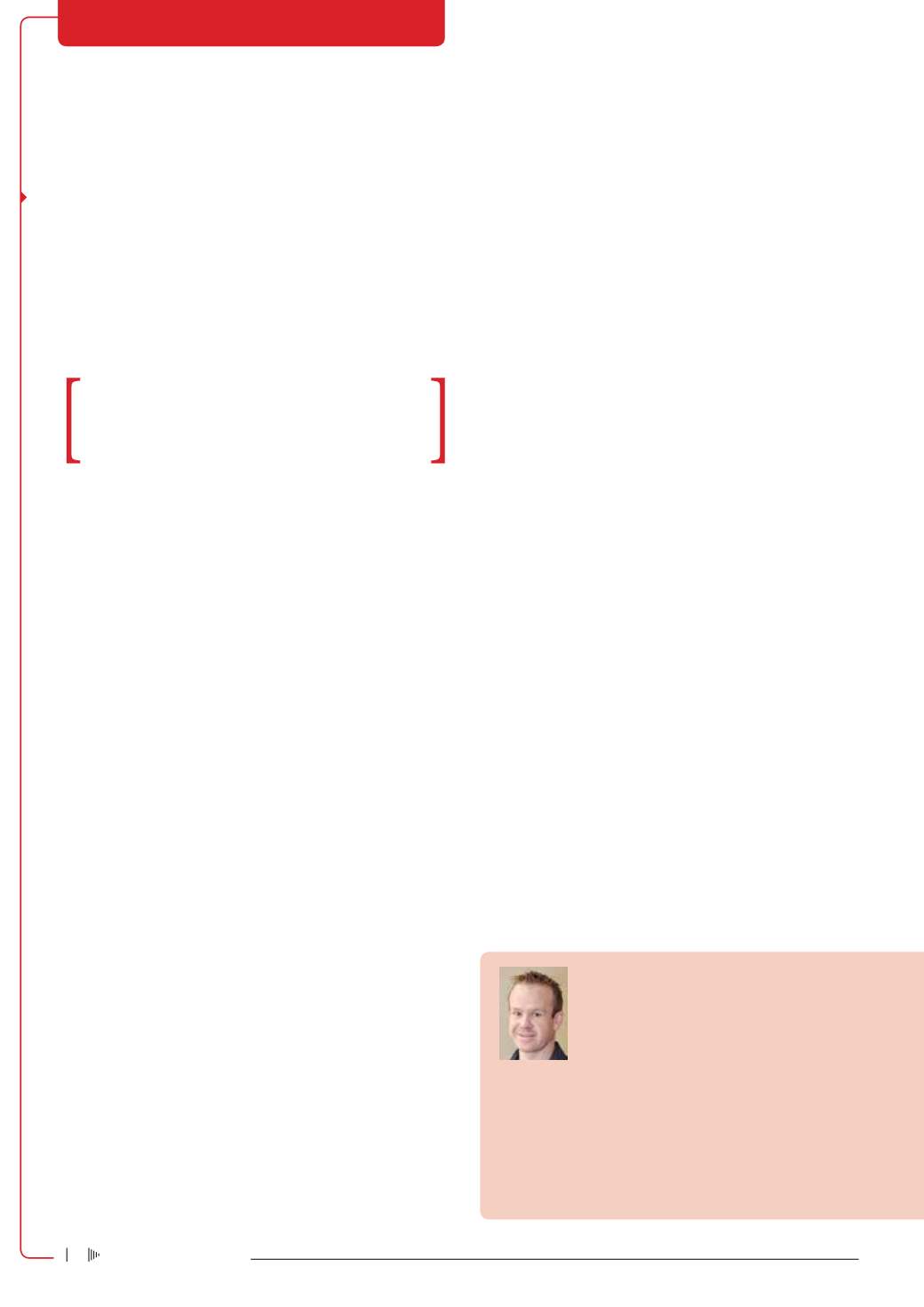

DRIVES, MOTORS + SWITCHGEAR
Jaco de Beer is a Project Engineer at Tectra Automation,
responsible for the company’s Project Department. With
five years’ experience in turnkey automation projects, Jaco
takes customers’ specifications and turns them into working
systems. Jaco has a B.Tech in Mechatronics, and is currently
completing his Master’s Degree in Mechatronics. He is
certified as having completed the following courses:
• National Diploma: Mechatronics
• Baccalaureus Technologia (B.Tech): Mechatronics
• Academic Excellence Award: Diploma and B.Tech
• Programme in Project Management: Certificate with Distinction
• Research Methodology: Certificate
• Courses: Advanced Excel, MS Project and Pneumatics
Enquiries: Email
jaco.debeer@tectra.co.zathe part has been fully cured in the curing oven, it will travel through
a cooling tunnel where excess heat is removed – it is possible to
extract excess heat from both the pre-heating and cooling phases.
This additional excess heat, which would traditionally be dumped
into the environment, can now be funnelled back into the curing
oven greatly reducing heat loss and increasing efficiency. Although
the current scope of the research project does not cover extraction
and re-use of excess heat, it would be a natural next step to greatly
reduce energy loss in impregnation machines.
Conclusion
It is clear from existing research and data that different curing meth-
ods will result in cured resins with different mechanical properties.
The curing source will also influence the time required to complete
curing. The combination of curing sources could offer a number of
benefits while limiting one another’s shortcomings. Experiments will
be carried out on each individual curing source, the data will then
be analysed to determine the optimal hybrid curing solution. Once
a hybrid resin curing system has been configured, experiments will
be carried out to establish if such a curing system will reduce the
curing time while increasing energy efficiency. Comparisons will
then be drawn between existing curing methods and the proposed
hybrid curing system. Analysis will be carried out on the fully cured
resin in order to compare mechanical properties of resin cured by
existing curing methods to a hybrid curing system. The resin proper-
ties tested include hardness, compression strength, tensile strength,
tensile modulus, toughness, stress and strain. In the manufacturing
industry, energy efficiency and production rates are crucial to ensure
the products manufactured are of the best quality while being envi-
ronmentally friendly. The tests completed on hybrid curing systems
will also showcase the possibility of combining curing systems that
are less cumbersome, requiring less maintenance while still achiev-
ing a fully cured resin with similar or better mechanical properties
to existing thermal curing systems.
References
[1] StoneGC et al. 2004. Electrical Insulation for RotatingMachines. 445
Hoes Lane Piscataway, NJ: John Wiley & Sons, INC. Publications.
[2] Senior P. 2005. A Review of Methods of Impregnation of LV Mo-
tors. Electricity + Control, June 2005.
[3] Power Blanket (2015) Curing Epoxy Resins, Available at: http://
www.powerblanket.com(Accessed: 22 June 2015).
[4] Endrmeit A, Johnson MS, Long AC. 2006. Curing of Composite
Components by Ultraviolet Radiation: A Review. POLYMER
COMPOSITES, Volume 27 (Issue 2), pp. 119-128.
[5] Rahmat AR, Day RJ. 2003. Curing Characteristics of Unsaturated
Polyester/aramid Reinforced Composite: Microwave vs. Thermal
Energy. Jurnal Teknologi, 39(), pp.
[6] Senior P. 2007. Impregnation of Low Voltage Motors with Thixo-
seal Epoxy Resin. Electricity+Control.
Bibliography
• Altana. 2011. DobeckanMF 8044, Grobmannstrabe 105, Hamburg:
ELANTAS Beck Gmbh.
• Altana. 2011. Dobeckan MF 8044 UV, Grobmannstrabe 105, Ham-
burg: ELANTAS Beck Gmbh.
• Strobl GR. 2007. The Physics of Polymers, 3
rd
edn., Berlin, Hei-
delberg: Springer.
• Matse. 1995. History of Polymers, Available at: http://matse1.
matse.illinois.edu(Accessed: 16 June 2015).
• Gherardi P, et al. 2008. Polymers for Electrical Insulation. 1st Ed.
Elantas.
• [1] Stone GC, et al. 2004. Electrical Insulation for Rotating Ma-
chines. 445 Hoes Lane Piscataway NJ: John Wiley & Sons, INC.,
Publications.
Acknowledgements
The author would like to thank the following companies/individu-
als for their contributions and inputs towards this research project.
Without the help of these individuals, this research project would
not be possible.
• Tectra Automation: Kevin Lombard (General Manager): Research
project sponsor while supplying continuous mentoring
• Tshwane University of Technology (TUT): Dr. Jamiru, Tamba
(PhD Field of specialisation: Materials): Supervisor tomy research
project who continuously gives mentoring and inputs towards
this research project
• TUT: Professor Sadiku, Rotimi (PhD Field of specialisation: Materi-
als): Input and mentoring towards this research project
• Robert Bosch: Nelis Gouws (Project Manager): Contact at Robert
Bosch, the entity for which the research project is being conducted
• Wilec South Africa: Paul Senior (Business Development Execu-
tive): Technical assistance with resin selection and supply of resin
used for testing
During the resin curing process, internal crosslinking,
which transforms the structure of the resin from a
liquid to an infusible solid structure, takes place.
Electricity+Control
November ‘15
6

















